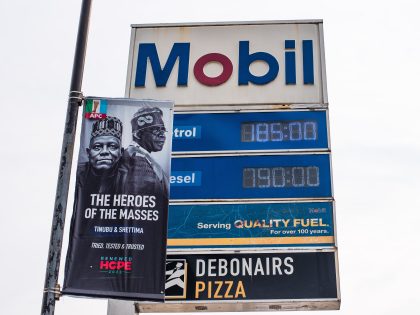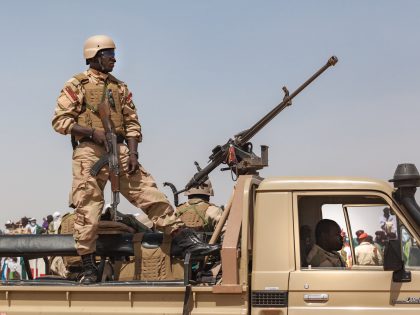#Kony2005
The writer revisits his notes from 2005 when he visited Acholiland, the site of a conflict between the LRA and Uganda's military.

Photo: Olufemi Terry.
I didn’t pay much mind to the #Kony2012 kerfuffle when it first surfaced back in March. I couldn’t be bothered to watch the film and was a bit blasé about the re-emergence (as it seemed to me) of the Lord’s Resistance Army as a topic of wide international interest. But now Invisible Children has released another film that promises the unleashing of a new wave of activism (they’re promising to take over the US capital in mid-November) and awareness-raising. The new film is an ode to martyrdom (a frivolous aside: watch Ben Keesey from 20:02 onward and compare his embattled defense to this one) but I otherwise found no reason to add to the blogosphere’s thorough deconstruction of the phenomenon. Instead I went through my notes from a 2005 research travel through Acholiland. Over one month, I talked to representatives of the Ugandan Army and other organizations in Gulu, Kitgum and Pader. The conflict had been underway at that time for nearly 20 years already.
The research, which was intended to guide a planned documentary film, went in the end toward my own edification. My knowledge of the conflict, even if not necessarily my ability to make sense of it, increased. But the film that got made, War Dance, concentrated on an annual dance tournament held in Acholiland, and like #Kony2012 avoided delving into any political, economic and sociohistorical context.
Rather than explain why I left Northern Uganda without drawing hard conclusions on Kony, the LRA, and the popular support it enjoyed among Acholis, I’ve reproduced a small section here from the notes and photographs taken in 2005.
Kilama George (in the photo above) is slim and shy, introspective. He, like many of the young Acholis one meets in Acholiland, northern Uganda, shows no signs of trauma. Also like many young Acholis, Kilama George was abducted by the Lord’s Resistance Army and spent time in the bush, fighting the Ugandan army and terrorizing civilians. In the bush, Kilama George was a bodyguard of Otti Vincent, the number two man in the LRA and a commander renowned for extreme viciousness, reputedly because of sexual impotence. Kilama George claims to have killed many people, merely carrying out orders, as he put it, and it was his ruthlessness on raids—torching huts, beating and maiming civilians—that brought him to the attention of Otti.
Kilama George is a particularly fascinating subject to interview for this reason: he is exceptionally thoughtful and perceptive about the LRA and its mystical leader. Unlike virtually all of my correspondents, George described Kony as having a mental problem, an assessment he made from seeing the LRA leader burst into sudden and inexplicable laughter. He also was able to explain that Kony’s frequent foretelling of government attacks was the result of maintaining regular radio contact with his commanders.
Kilama George’s story, and academic research currently being done in IDP camps increasingly affirms that simple readings of the LRA, its support among the Acholi populace and even the experience of abduction and return undergone by children are frequently wrong and with potentially harmful outcomes.
Many aid agencies have set up rehabilitation centers to provide psychosocial counseling to returnees. Much, if not all of this counseling is premised on the notion that time spent in the bush is essentially a continuous nightmare for the children, and that all children yearn to escape; only fear or death prevents some from actually doing so.
Most of the returnees I spoke to admitted that life in the bush was hard: in the dry season, water and food is particularly scarce and the lack of foliage cover means frequent attack by the Army’s helicopter gunships. Many, however, spoke of incidents that were startling, of unexpected kindnesses and actions that any casual follower or observer of the LRA would not expect.
George remembers being bound very tightly with rope by a commander at the time of his abduction, so tightly that he thought his arms might break. However, a few days later, his feet swollen to the point where he was unable to walk, the same commander carried George on his back, while other children similarly afflicted were summarily clubbed to death.

Alternatively, take the account of Anena Grace, a shy sixteen year old with a lovely smile. Grace walks with crutches as a result of being shot in the leg during her capture by the Ugandan Army. The leg is not healing properly and she has been in a rehabilitation center since February 2005 receiving medical attention and counseling. Further, Grace is seven months pregnant with the child of her “husband,” a rebel commander to whom she’d been given, and who died in the attack in which she was rescued. Grace was favored over the commander’s five other “wives,” given the choicest foods, and never moving far from his side. In fact, when he was ordered to send his wives to Sudan for inspection by Kony, Grace alone remained with him. Grace attributes this treatment to her education, which meant that he relied on her heavily; both he and the other wives were illiterate.
As these stories reveal nuances in the experiences of abductees in the bush, so it must be that counseling and psychosocial care should not be automatically administered from a standpoint of presumed trauma. In fact, much of the discourse, whether economic, social or political about the war in Northern Uganda is reductive and facile, accepting as true and established ideas and conceits that are at best, only partly true and sometimes patently false.
The findings of Ben Mergelsberg, a young German researcher I interviewed who spent time in Northern Uganda, are striking if preliminary, and point toward the need for a more tailored approach to psychosocial care for returnees. Mergelsberg posits that newly abducted children are torn between two strong urges: growing in to the LRA and escaping out. These two essentially war with one another in the mind of the child, and typically cause tremendous stress, particularly in the initial period in the bush.
However, those children that survive what is essentially an initiation into a world with new rules and expectations experience an improvement in life and greater acceptance and trust, as they receive a gun and become full members of a community. Bullying by other more senior members tends to stop after a child becomes a soldier, and there is a sense of power attendant with wielding a weapon. The extent to which the urge to escape out persists determines whether a child soldier will actually attempt to do so, but it is far from certain that all abductees wish to escape. Many of Mergelsberg’s correspondents were able to enumerate advantages of life in the bush over life in the village, or still worse, the IDP camp.
Similarly, when a child does escape, it is the crossing once more of boundaries into a world, that of the wider Acholi community, with rules that are now unfamiliar and even incomprehensible after those of the bush. Further, between escape and rescue is a period of extreme peril, in which both the LRA and the government’s soldiers are potential enemies and represent equally the possibility of death. The trajectory of successful escapees—military barracks, reception centre, rehabilitation centre, home—is a bewildering series of transitions, accompanied by the loss of power and self-belief that comes with surrender of one’s gun, and the realization that one’s actions in the bush are likely to be perceived unfavourably by the wider community.
The experience of having lived in two worlds and retaining within oneself, perhaps permanently, the knowledge of both is the source of much difficulty for many returnees from the bush. While the war continues, both are options, although few seem to choose to return to the bush. There is however banditry in the region, often attributed to the LRA, that may be the work of returnees.
What is still more interesting is the claim by many former abductees that they remain soldiers. Perhaps this is acknowledgement that there is always a potential to react to an incident or situation by reverting to violence or drastic action. Perhaps it is acknowledgement of a skill acquired; many former LRA fighters join the 105th battalion of the Ugandan Army, a unit comprised entirely of those who once fought for Kony. Olum Michael, the commander that carried Kilama George on his back, is now a member of the 105, as it is known. The creation of the battalion last year has boosted the effectiveness of the army in countering LRA attacks.

For Kilama George, and many others, the future seems uncertain, if not bleak. He walks several kilometers into Gulu from a nearby IDP camp to volunteer for the War Affected Children’s Association, a local NGO seeking to assist returnees. There is no money for further studies, partly because many livelihoods have been destroyed by life in the IDP camps, and partly because he did not do well in his O-level examinations, a fact that might be connected with having spent years of his life in the bush. While Kilama George is at times painfully eye shy, diffident and soft spoken, I cannot help but think that the past holds part of the key to his future. He has choices, both of which he understands, and knows, and who can say what frustration or desperation might impel him to choose.



















